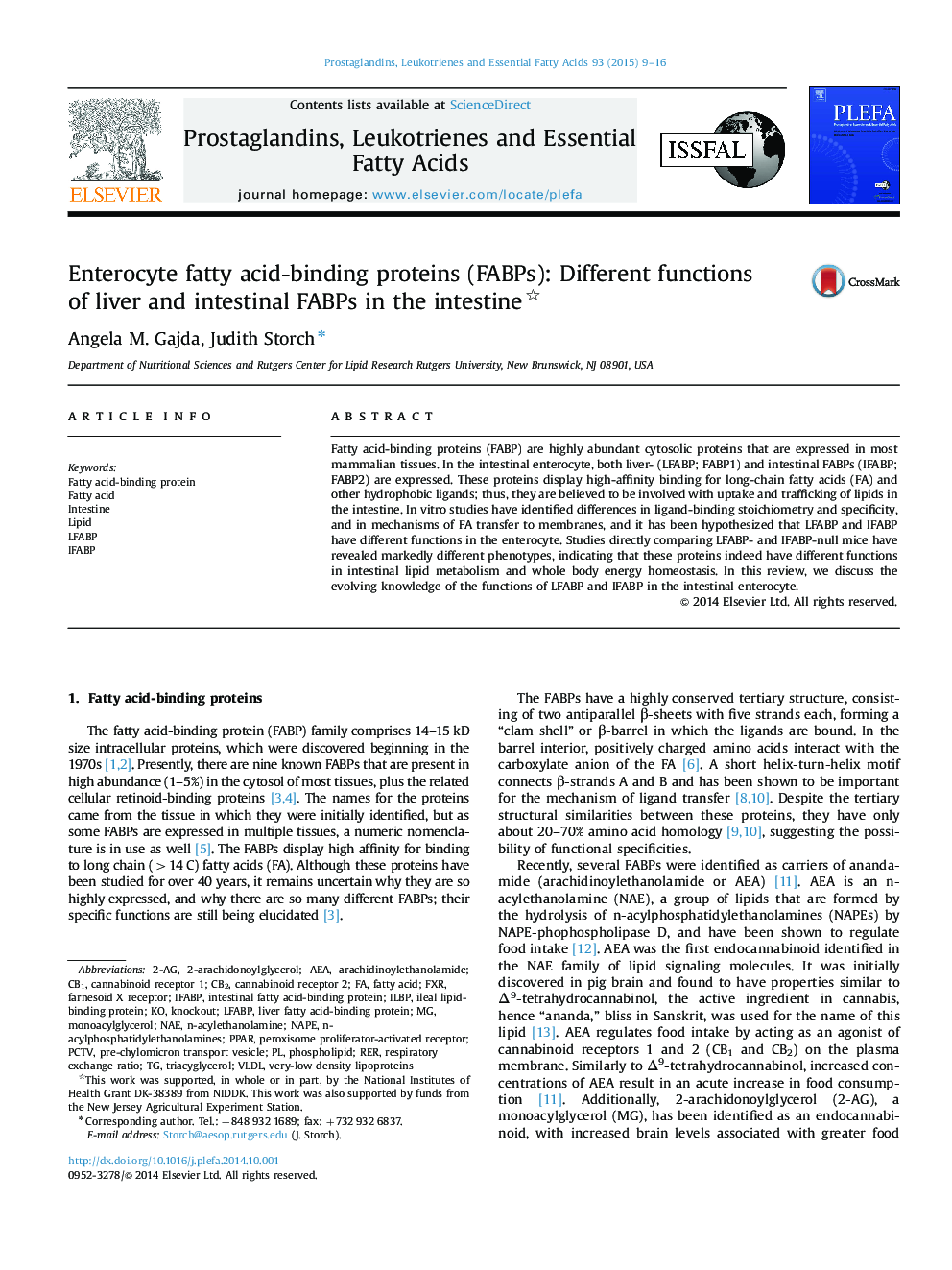| Article ID | Journal | Published Year | Pages | File Type |
|---|---|---|---|---|
| 2777524 | Prostaglandins, Leukotrienes and Essential Fatty Acids (PLEFA) | 2015 | 8 Pages |
Fatty acid-binding proteins (FABP) are highly abundant cytosolic proteins that are expressed in most mammalian tissues. In the intestinal enterocyte, both liver- (LFABP; FABP1) and intestinal FABPs (IFABP; FABP2) are expressed. These proteins display high-affinity binding for long-chain fatty acids (FA) and other hydrophobic ligands; thus, they are believed to be involved with uptake and trafficking of lipids in the intestine. In vitro studies have identified differences in ligand-binding stoichiometry and specificity, and in mechanisms of FA transfer to membranes, and it has been hypothesized that LFABP and IFABP have different functions in the enterocyte. Studies directly comparing LFABP- and IFABP-null mice have revealed markedly different phenotypes, indicating that these proteins indeed have different functions in intestinal lipid metabolism and whole body energy homeostasis. In this review, we discuss the evolving knowledge of the functions of LFABP and IFABP in the intestinal enterocyte.
